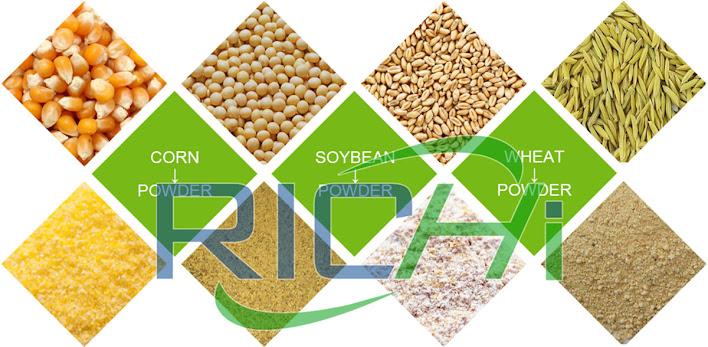What are the main components of feed?
The chemical composition of the feed is the most basic index for evaluating the nutritional value. The nutritional value first depends on the content of various important substances (such as protein, fat, etc.) in the feed. The vast majority of the feed comes from plants, with only a few from animals, microorganisms and minerals.
These feeds consist of oily seeds (rapeseed, soybean, sunflower, peanut), etc. The energy source of these feeds is mainly from lipids, so their energy density is higher than that of starchy feeds. These feeds are also lower in protein. Since these oils also have industrial uses, the popularity of such feeds is not high. The residue left after industrial oil extraction still contains a fairly high oil content. Such slag can also be used as feed, which is especially good for ruminants and is also widely used.
In these feeds, whole plants are fed, such as grass, corn, grains, etc. These feeds contain a lot of carbohydrates, which are very nutritious. For example, grass contains mainly carbohydrates and 15 to 25% protein, while corn contains more starch (about 20-40%) and less than 10% protein. Green fodder can be fed fresh or stored after drying. They are more suitable for ruminants, horses and waterfowl. Generally not used to feed pigs. The green fodder preserved after fermentation is called silage.
(4) Other feed
In addition to the feeds mentioned above, there are many other types of feeds that can come directly from nature (such as fishmeal) or industrial replicas (such as rice bran, distiller's grains, leftovers, etc. Different livestock use different feeds, but These feeds are especially suitable for ruminants.
According to the measurement, there are at least 26 elements involved in the composition of various feed nutrients, among which there are four main elements, carbon, hydrogen, oxygen and nitrogen accounting for 95% of the plant dry matter. In addition, sulfur, phosphorus, potassium, calcium, magnesium, fluorine, iodine, chlorine, manganese, zinc, cobalt and the like are contained. All elements do not exist individually in the feed, but form various complex inorganic and organic compounds.
By Ingredient
By Ingredient
Generally speaking, only plant feed is called feed, which includes grass, various grains, tubers, roots, etc. These feeds can be roughly divided into:
(1) Feed containing a lot of starch
These feeds consist mainly of starch-rich grains, seeds and roots or tubers. Such as various grains, potatoes, wheat, etc. These feeds provide energy mainly through polysaccharides with little protein. They are suitable for ruminants, poultry and pigs, but feeds with too much starch are not suitable for horses.
(2) Oily feed
(2) Oily feed
These feeds consist of oily seeds (rapeseed, soybean, sunflower, peanut), etc. The energy source of these feeds is mainly from lipids, so their energy density is higher than that of starchy feeds. These feeds are also lower in protein. Since these oils also have industrial uses, the popularity of such feeds is not high. The residue left after industrial oil extraction still contains a fairly high oil content. Such slag can also be used as feed, which is especially good for ruminants and is also widely used.
(3) Green feed
In these feeds, whole plants are fed, such as grass, corn, grains, etc. These feeds contain a lot of carbohydrates, which are very nutritious. For example, grass contains mainly carbohydrates and 15 to 25% protein, while corn contains more starch (about 20-40%) and less than 10% protein. Green fodder can be fed fresh or stored after drying. They are more suitable for ruminants, horses and waterfowl. Generally not used to feed pigs. The green fodder preserved after fermentation is called silage.
(4) Other feed
In addition to the feeds mentioned above, there are many other types of feeds that can come directly from nature (such as fishmeal) or industrial replicas (such as rice bran, distiller's grains, leftovers, etc. Different livestock use different feeds, but These feeds are especially suitable for ruminants.
The design of the feed formula should firstly determine the feeding standards (nutrient requirements) according to the needs of different livestock and poultry for various nutrients, and secondly, there must be a nutrient composition of the commonly used feed. All nutrient indicators required by the feed standard should be expressed in the feed nutritional composition table.
Main feed processing machines:



Comments
Post a Comment